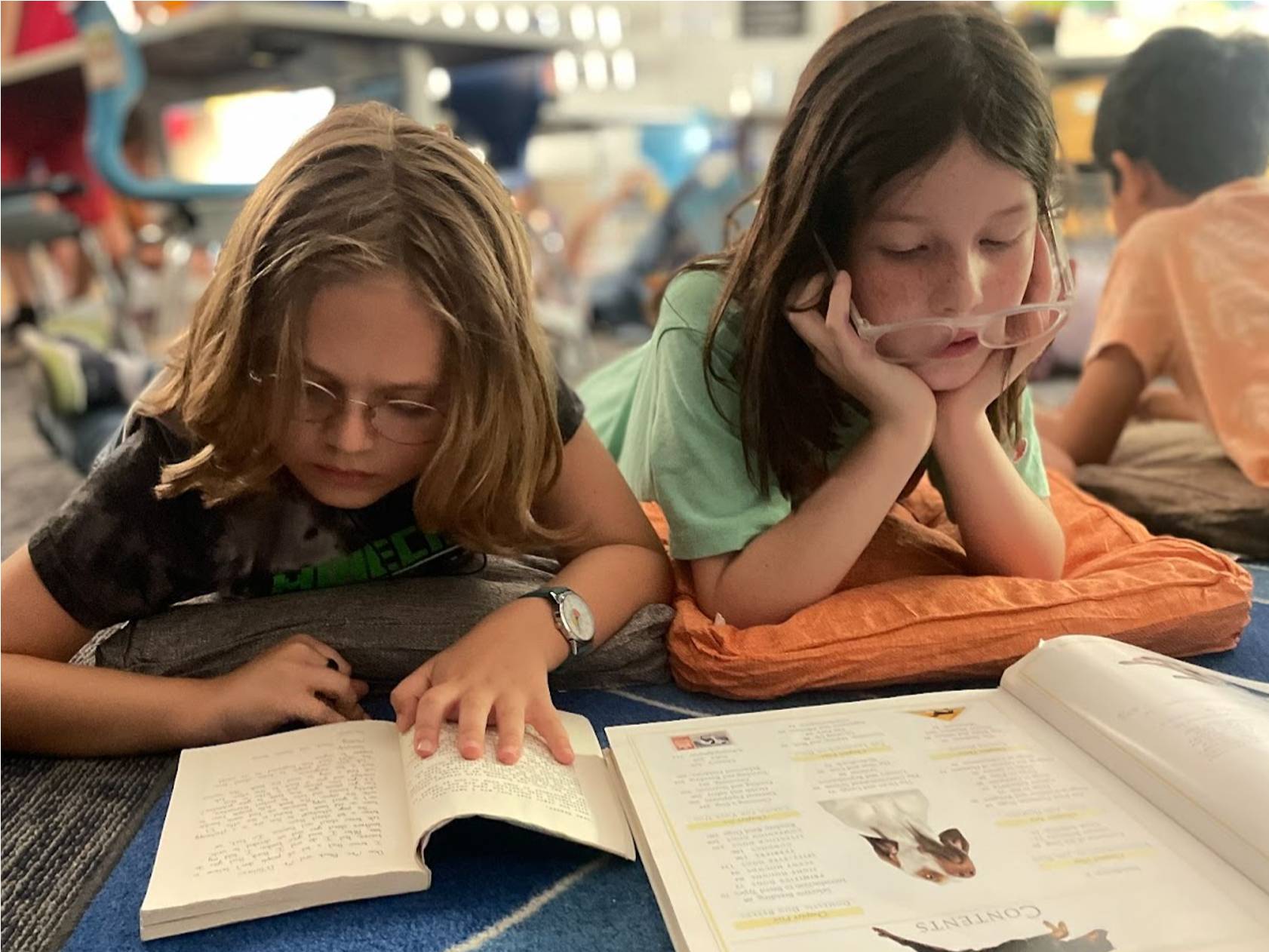“I think he’s feeling left out because he’s new and everyone’s already scared of him but he just wants to play.”
Third grade readers this week practiced metacognition during a lesson about the difference between just reading text versus thinking, feeling, and wondering about the text as you read. Their teacher defined “real reading” as not only getting words off the page, but also building ideas as you read, pausing to make connections, predictions, inferences, and to notice how you feel. After defining these metacognitive pieces of reading, students practiced together with the book The New Bird in Town by Jamie Deenihan. As their teacher read, students held up two different signals—one for when they were hearing text, and another for when a teacher or peer was sharing thinking. At each step, a group leader put either a green or red chip into a bowl, green for text, red for thinking, making a “reading salad” as they went and noticing the accumulation and interleaving of text and connections over time.
I think he meant have them come over for dinner, not eat them for dinner!
The book choice invited plenty of opportunities to make connections and predictions (“I think he feels kind of sad even though he has a new house and he’s moving in.” And, “I wonder if he is going to make a friend”) and also connected to students’ own experiences of beginning a new school year. The main character is misunderstood at first by new peers, but with time and perseverance finds meaningful connection and is celebrated. Students were also able to extend their thinking to analysis of word choice and connect to tricky vocabulary. Observations about text like, “I think he meant have them come over for dinner, not eat them for dinner!” help students practice life-long skills of text analysis, all within a context that normalizes ups and downs in friendship and shares explicit strategies to build strong connections.

